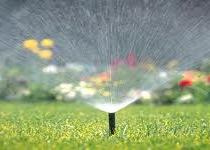- Government
-
- City Council & Mayor Ordinances Resolutions Agendas and Meetings Boards and Commissions City Charter Contact Us
- Departments A-Z Administration City Attorney City Manager City Recorder Court Human Resources Community Development Building Economic Development Planning Tourism Emergency Management
- Finance Library Municipal Services Billing (Water Bill) Police 9-1-1 Code Compliance Public Works Engineering Maintenance Operations
-
- Community
- Business
- How Do I
-
- Find info on Public meetings Apply for a job Apply for an internship Contact the City Council Submit a Public Records Request Report an issue in Newberg Find a leak Find pavement maintenance information View the City Events calendar Apply for a library card Find the city on Social Media
- Pay my Municipal Services Statement (Water Bill) Read my Municipal Services Statement (Water Bill) Access Municipal Services Programs Know if I need a building permit Apply for a building permit Schedule an inspection Recycle Buy Compost Get a water conservation kit
- Apply for a Police ride-along Volunteer as a Reserve Officer Pay My Parking Ticket File a Code Complaint Obtain an animal permit
-
Irrigation System Maintenance
IN THE SPRING:
Spring is the time to check your irrigation system. Look for leaks drips and other issues.
If you have a backflow device (required under city code for sprinkler systems) now is the time to have it tested. (click here for more information)
Prevention now will keep your system operating efficiently and save water.
- Close all manual drains (they were probably left open when sprinkler system was drained last fall).
- Slowly open the main valve, allowing the piping between it and the backflow prevention device to fill with water.
- Pressurize the mainline between the backflow device and the control valves.
- Have one of the control valves open while you do this, so air trapped in the piping can escape through the sprinkler heads.
- Have the backflow prevention device tested by a state-certified tester. Contact Public Works (503.537.1289) for assistance.
- Run the entire sprinkler system, one zone at a time. As you do this, check the following:
- Signs of leaks, damage to sprinkler heads or pipe which occurred over the winter. Repair and replace as needed.
- Spray patterns. Adjust your sprinkler heads so they water your landscape.
- Sidewalks dont get thirsty. Make sure the spray isn’t blocked by plants.
- Clean clogged nozzles and sprinkler heads
IN THE FALL:
Winterize your irrigation system:
- Look for perpetual damp spots in your landscape as these might indicate a leak or broken line that will have to be fixed.
- Get your backflow device checked. This is required each year by city code and state statute.
- Winterize - empty any water and turning it off for the season (this includes drip systems too!)
- Insulate outdoor pipes.
- Empty and disconnect your garden hoses from outdoor faucets.
- Clear debris from your gutters and downspouts so overflow from storms doesn't flood your lawn.
Source: conserveh2o.org


